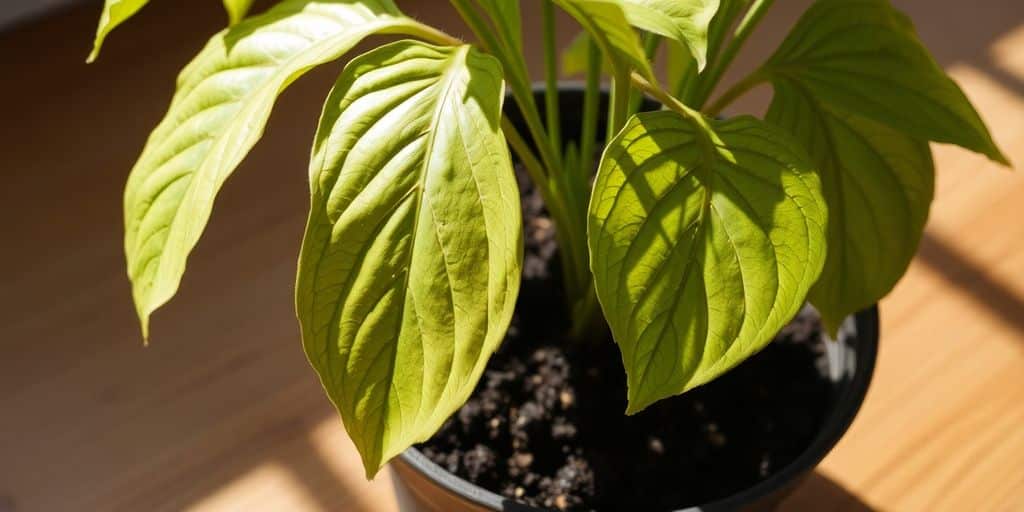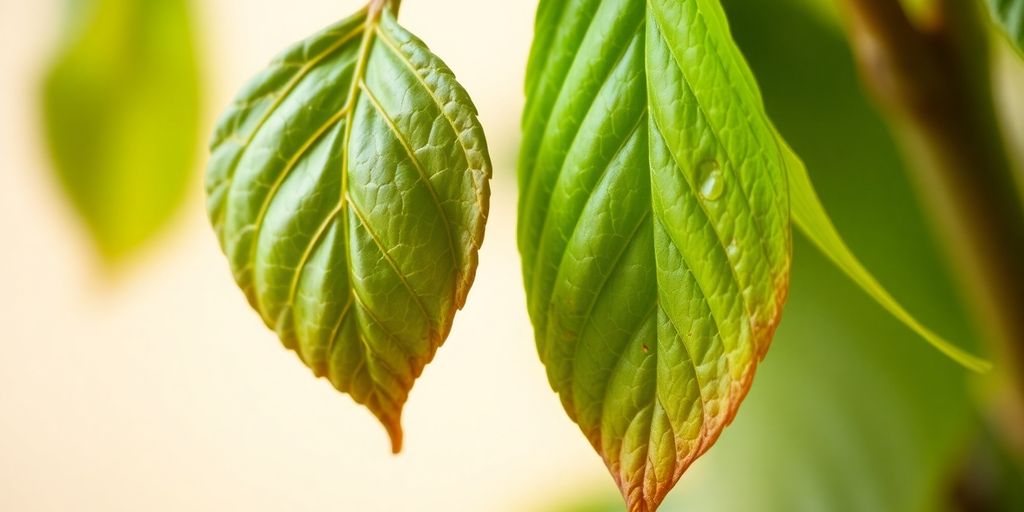How to tell if your plant needs more or less water is one of the most common challenges for plant lovers. Striking the right balance can be tricky, especially with different plants having different needs. But with a few simple clues, you can avoid overwatering or underwatering.
Watering mistakes are often the reason plants struggle indoors. Too much water can lead to root rot, while too little causes wilting and dry leaves. Recognizing the signs early can make all the difference.
Every plant has its own way of signaling distress. From changes in leaf color to soil texture, learning what to look for is key. It’s all about observing and adjusting based on what your plant is telling you.
Wondering where to start? This guide will walk you through essential tips to read your plant’s signals and water with confidence. Let’s take the guesswork out of plant care.
Key takeaways
- Look for droopy leaves and wilting to spot overwatering.
- Dry soil and slow growth are signs of underwatering.
- Adjust your watering routine based on the plant’s needs and environment.
Identifying signs of overwatering

Okay, so you think you might be loving your plant a little too much? I’ve been there, done that! It’s easy to do, especially when you’re just starting out. Here’s what to look for if you suspect you’re overwatering:
Recognizing droopy leaves and wilting
Don’t jump to conclusions right away! Droopy leaves can be tricky because they can also mean your plant is thirsty. The key is to check the soil moisture.
If the soil is already wet or soggy, and the leaves are drooping, overwatering is likely the culprit. It’s like when you drink too much water and feel all bloated and yucky – plants can feel that way too!
Checking for root rot and soil conditions
Root rot is a serious bummer. It happens when the roots sit in water for too long and start to decay. Here’s what to look for:
- Smell: Does the soil have a funky, rotten smell? That’s a big red flag.
- Touch: Are the roots mushy and brown or black? Healthy roots should be firm and white or light tan.
- Soil: Is the soil constantly soggy, even days after watering? Is there mold growing on the surface? These are all signs of overwatering.
If you catch it early, you might be able to save your plant by repotting it with fresh, well-draining soil and trimming away any rotten roots. But sometimes, it’s just too late, and you gotta say goodbye. It’s tough, but it happens to the best of us!
Understanding signs of underwatering

Okay, so you’re not drowning your plants, but are you giving them enough to drink? It’s a balancing act, I tell ya! I’ve definitely been there, staring at a plant wondering if I’m being a neglectful plant parent. Here’s what to look for:
Observing dry soil and slow growth
First things first, stick your finger in the soil! If the top inch or two feels bone-dry, that’s a big clue. Also, keep an eye on how fast (or slow) your plant is growing.
If it seems like it’s stuck in slow motion, it might not be getting enough water to fuel its growth. I’ve noticed that sometimes the leaves will be smaller than usual too, which is another telltale sign.
Noticing leaf curling and discoloration
Leaves can be pretty dramatic when they’re thirsty. Instead of just drooping like they do when they’re overwatered, underwatered leaves tend to curl up and get crispy around the edges. You might also see some discoloration, but usually it’s more of a brownish hue than the yellow you get with overwatering.
It’s like they’re trying to conserve every last drop of moisture! I had a fern once that looked like it was auditioning for a desert scene – totally my bad for forgetting about it for too long.
Adjusting your watering routine
Creating a flexible watering schedule
Alright, so you’ve figured out if your plant’s drowning or dying of thirst. Now what? Don’t just jump into a rigid watering schedule. Plants aren’t robots; they don’t need water every Wednesday at 2 PM sharp. Instead, think of it as creating a flexible routine.
I usually pick a day to check on my green buddies, but I only water the ones that actually need it. It’s easier to add water than to take it away, so when in doubt, err on the side of underwatering.
- Consider the season. Plants drink more in the summer than in the winter. It’s like how I crave iced tea when it’s hot and hot cocoa when it’s cold.
- Pay attention to the weather. A string of sunny days? Your plants will probably need more water. Cloudy and cool? Hold off a bit.
- Set reminders on your phone. I’m forgetful, so this is a lifesaver. Just don’t blindly follow the reminder; use it as a prompt to actually check the soil.
Using proper soil and potting techniques
Soil and pots matter a lot. If your soil is like concrete, the water will just run off. And if your pot doesn’t have drainage, your plant is basically sitting in a swamp. Here’s the lowdown:
- Use well-draining soil. This is key. You want something that holds moisture but doesn’t stay soggy. A mix of potting soil, perlite, and vermiculite is usually a good bet.
- Make sure your pot has drainage holes. I can’t stress this enough. If it doesn’t, drill some! Your plant will thank you.
- Consider the pot size. If your plant is rootbound (roots circling around and around), it’s time to repot it into something bigger. More room for the roots means more room for water and nutrients.
I’ve learned the hard way that these things make a huge difference. Trust me, your plants will be much happier if you give them the right foundation.
Wrapping it up: Watering your plants right
So, there you have it! Figuring out how much water your plants need doesn’t have to be a guessing game. Just keep an eye on those leaves and the soil. If they’re droopy or the soil feels dry, it’s time to water. But if the leaves are yellowing or the soil is soggy, you might be giving too much.
Remember, every plant is different, so take some time to learn about what yours likes. And hey, don’t stress too much about sticking to a strict schedule. Just check in on your plants regularly, and you’ll get the hang of it. Happy gardening!
Frequently asked questions
How can I tell if my plant is overwatered?
If your plant’s leaves are droopy and the soil feels soggy, it might be getting too much water. Also, check for a bad smell from the roots, which can mean root rot.
What are the signs of underwatering my plant?
If the soil is very dry and your plant’s leaves are curling or turning brown, it probably needs more water. Slow growth can also be a sign.
How often should I water my plants?
It depends on the type of plant and the conditions in your home. Generally, check the soil weekly and water when the top inch feels dry.
